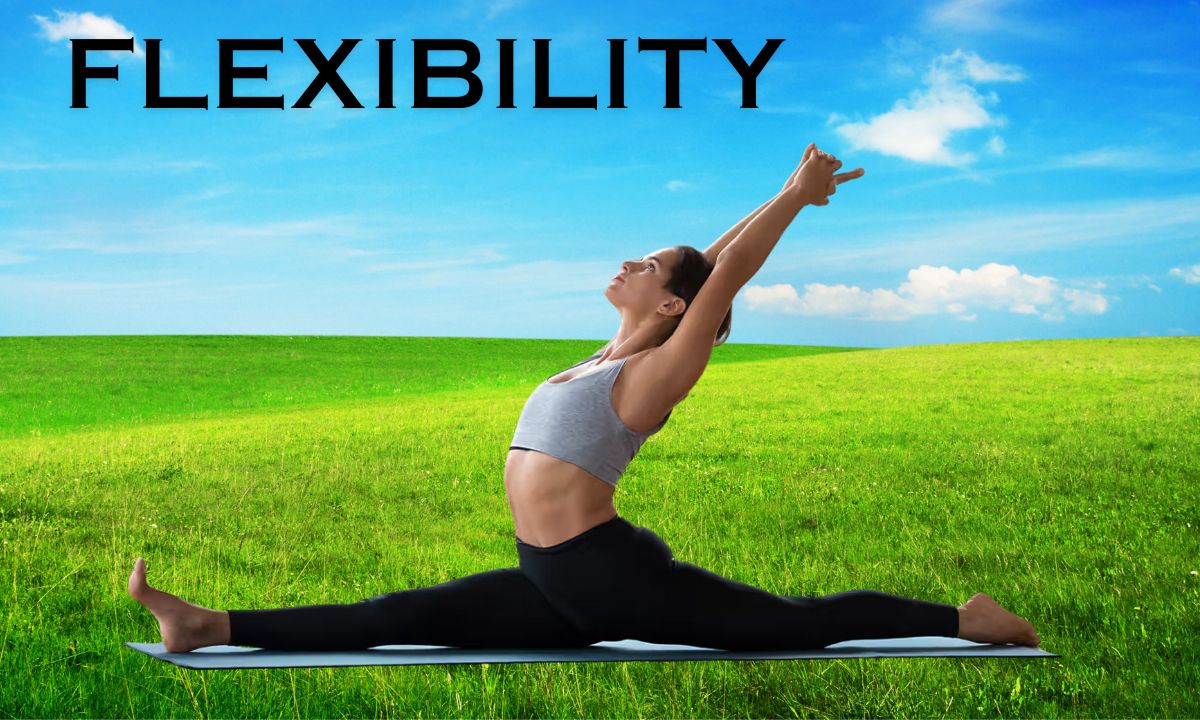The Health Related Components Of Fitness are essential aspects that contribute to overall physical well-being and help individuals maintain a healthy lifestyle. These components include cardiovascular endurance, which measures the efficiency of the heart, lungs, and blood vessels in supplying oxygen during prolonged physical activity, and muscular strength, which focuses on the ability of muscles to exert force during resistance-based activities. Another key component is muscular endurance, which assesses the ability of muscles to sustain repeated contractions over time without fatigue. Additionally, flexibility is crucial for the range of motion in joints, helping to prevent injuries and improve mobility. Lastly, body composition, the ratio of fat to lean mass in the body, plays a significant role in determining overall health. Together, these components form the foundation for fitness programs aimed at improving health, reducing the risk of chronic diseases, and enhancing quality of life.
Cardiovascular Endurance (Aerobic Fitness)
Cardiovascular endurance, also known as aerobic fitness, refers to the ability of the heart, lungs, and blood vessels to supply oxygen-rich blood to working muscles during sustained physical activity. It measures how efficiently the body performs tasks like running, cycling, or swimming over an extended period. High cardiovascular endurance improves stamina, reduces fatigue, and lowers the risk of heart disease, diabetes, and other chronic conditions. Activities like brisk walking, jogging, or aerobic exercises can help enhance this component, promoting overall health and well-being.

Benefits Of Cardiovascular Endurance
Improving your cholesterol and blood pressure levels.
Reducing your risk of many diseases, such as heart and blood vessel conditions.
Helping you live longer.
Strengthening your heart and lungs.
Helping you complete everyday tasks (like carrying a full laundry basket or climbing stairs) with less effort.
Improving brain function.
Increasing feelings of emotional well-being.
Improving your quality of life.
What Are Cardiovascular Endurance Exercises?
Exercises that improve your cardiovascular endurance make you breathe in more oxygen and make your heart rate go up. Examples of cardiovascular endurance activities include:
Swimming.
Riding a bike.
Dancing.
Jogging.
Walking.
Jumping rope.
Climbing stairs.
Muscular Strength
Muscular strength refers to the ability of a muscle or group of muscles to exert maximum force against resistance in a single effort. It is a key component of physical fitness, essential for performing everyday activities like lifting, pushing, or pulling objects. Improving muscular strength helps enhance overall body stability, bone density, and joint health while reducing the risk of injury. Strength training exercises, such as weightlifting, resistance band workouts, or bodyweight exercises like push-ups, are effective in building muscular strength.

Benefits of Muscular Strength
Improved Functional Ability:
Enhances your ability to perform daily activities, such as lifting, carrying, and pushing objects, with greater ease and less risk of injury.
Increased Metabolic Rate:
Builds muscle mass, which can elevate your resting metabolic rate and help with weight management.
Better Joint Health:
Strengthens the muscles around joints, which can reduce the risk of joint injuries and improve stability.
Enhanced Athletic Performance:
Improves performance in sports and physical activities by enabling you to generate more force and power.
Bone Health:
Helps increase bone density, reducing the risk of osteoporosis and fractures.
Improved Posture and Balance:
Strengthening core and back muscles contributes to better posture and balance, reducing the risk of falls and back pain.
How to Improve Muscular Strength
Engage in Resistance Training:
Examples: Weightlifting, bodyweight exercises (e.g., push-ups, squats), and resistance band exercises.
Frequency: Aim for 2-3 days per week, allowing at least 48 hours of rest between workouts targeting the same muscle group.
Use Progressive Overload:
Gradually increase the weight, resistance, or intensity of your exercises to continually challenge your muscles and promote strength gains.
Focus on Proper Form:
Use correct technique to maximize effectiveness and reduce the risk of injury.
Include Compound Exercises:
Incorporate multi-joint movements that work several muscle groups simultaneously (e.g., squats, deadlifts, bench presses) to build overall strength.
Allow for Adequate Recovery:
Ensure muscles have time to recover and repair between strength training sessions. This includes getting enough rest, sleep, and proper nutrition.
Monitor and Adjust Your Routine:
Track progress and make adjustments to your workout routine as needed to continue challenging your muscles and avoiding plateaus.
Muscular Endurance
Muscular endurance is the ability of a muscle or group of muscles to perform repeated contractions or maintain a sustained effort over an extended period. It is essential for activities requiring prolonged physical effort, such as cycling, swimming, or holding a plank. Improving muscular endurance enhances overall stamina, reduces fatigue, and supports better posture and functional movement. Exercises like push-ups, squats, or lightweight resistance training with high repetitions are effective in developing muscular endurance. It plays a vital role in both athletic performance and daily physical tasks.

Benefits Of Muscular Endurance
According to the American Council on Exercise (ACE), the benefits of muscle endurance include:
helping maintain good posture and stability for longer periods.
improving the aerobic capacity of muscles.
improving the ability to carry out daily functional activities, such as lifting heavy items.
increasing athletic performance in endurance-based sports’
How To Improve Endurance
To increase muscular endurance, ACE recommend a combination of lower and upper body exercises, with strengthening exercises to target the whole body.
Moderate resistance training, with short intervals in between for rest, creates short bursts of tension to build strength.
Circuit or high-intensity interval training (HIIT) can be a suitable way to combine cardio and strength training into one workout.
Unless a person’s fitness goals involve training for a particular endurance-based sport, training for muscular endurance alone may not be the most appropriate strategy.
Flexibility
Flexibility exercises are activities that improve the ability of a joint to maintain the movement necessary for carrying out daily tasks and physical activity.
Examples of flexibility activities include:
stretching, yoga, tai chi, pilates

Benefits Of Flexibility And Strength Activities
- Improves Joint Mobility: Enhances range of motion and reduces stiffness.
- Prevents Injuries: Strengthens muscles and ligaments, lowering injury risks.
- Enhances Posture: Supports better body alignment and reduces muscular imbalances.
- Boosts Functional Fitness: Facilitates easier performance of daily tasks.
- Relieves Chronic Pain: Helps manage pain in areas like the back or joints.
- Increases Muscle Strength and Endurance: Builds muscle mass and stamina.
- Improves Athletic Performance: Optimizes physical capabilities for sports.
- Promotes Relaxation: Reduces stress and supports mental well-being.
- Enhances Balance and Stability: Improves overall coordination and control.
- Supports Long-Term Health: Contributes to a more active and healthy lifestyle.
How To Improve Flexibility
- Stretch Regularly: Perform static stretches and hold each stretch for 20–30 seconds.
- Practice Dynamic Stretching: Use controlled movements as a warm-up to improve mobility.
- Engage in Yoga or Pilates: These activities enhance flexibility and muscle strength.
- Warm Up Before Stretching: Increase blood flow with light exercises before stretching.
- Stay Consistent: Stretch 3–5 times a week for gradual improvement.
- Use Proper Technique: Avoid bouncing or overstretching to prevent injury.
- Hydrate Well: Maintain muscle elasticity by staying hydrated.
- Incorporate Foam Rolling: Release muscle tension with myofascial techniques.
- Focus on All Muscle Groups: Ensure balanced flexibility throughout the body.
- Progress Gradually: Stretch comfortably and increase intensity over time.
Body Composition
Body composition is a term often used often by doctors and health and fitness professionals. It refers to the percentage of fat, bone, and muscle in your body. It can give your doctor a better idea of your physical health and fitness than your body weight alone. Your doctor may use it to learn more about your nutrition, health status, and risks of disease. In the fitness world, it’s used to keep track of how effective a particular program is for fat loss and muscle gain.
Benefits Of Body Composition
- Improved Physical Health: Reduces the risk of chronic diseases like heart disease, diabetes, and hypertension.
- Enhanced Energy Levels: Promotes better energy utilization and reduces fatigue.
- Better Physical Performance: Supports strength, endurance, and mobility for daily and athletic activities.
- Increased Metabolism: Higher lean muscle mass boosts calorie burning, aiding weight management.
- Reduced Joint Stress: Maintains healthy body weight, relieving pressure on joints and reducing the risk of arthritis.
- Improved Confidence: A balanced body composition enhances self-esteem and body image.
- Supports Long-Term Health: Helps maintain healthy aging and reduces the risk of lifestyle-related illnesses.
- Better Recovery: Leaner bodies recover faster from physical exertion and injuries.
- Enhanced Hormonal Balance: Promotes healthier functioning of hormones for overall well-being.
- Longevity: Contributes to a longer and healthier life by reducing health risks.
How To Improve Body Composition
Improving body composition refers to making changes in the ratio of fat to lean mass (muscle, bones, and organs) in your body. The goal is often to reduce excess body fat while increasing or maintaining lean muscle mass to achieve a healthier, more balanced physique. This improvement involves adopting specific strategies such as proper exercise, balanced nutrition, hydration, and adequate rest. It focuses on enhancing overall health, fitness, and appearance rather than simply focusing on weight.
- Engage in Strength Training: Build lean muscle mass through weightlifting or resistance exercises.
- Incorporate Cardiovascular Exercise: Perform activities like running, cycling, or swimming to burn excess fat.
- Follow a Balanced Diet: Consume a mix of lean proteins, healthy fats, complex carbohydrates, and plenty of vegetables.
- Monitor Calorie Intake: Maintain a slight calorie deficit to lose fat or a surplus for muscle gain, depending on your goal.
- Stay Consistent: Adhere to a structured exercise and nutrition plan over time for sustainable results.
- Prioritize Sleep: Get 7–9 hours of quality sleep to support muscle recovery and fat loss.
- Hydrate Well: Drink plenty of water to enhance metabolism and improve workout performance.
- Avoid Processed Foods: Limit sugary snacks, junk food, and high-fat processed items.
- Track Progress: Use tools like body composition scales or measurements to monitor changes.
- Be Patient and Persistent: Improving body composition takes time, so stay committed to your routine.



